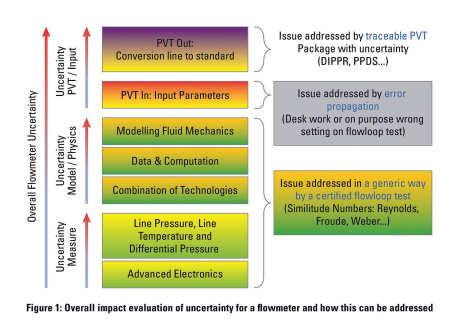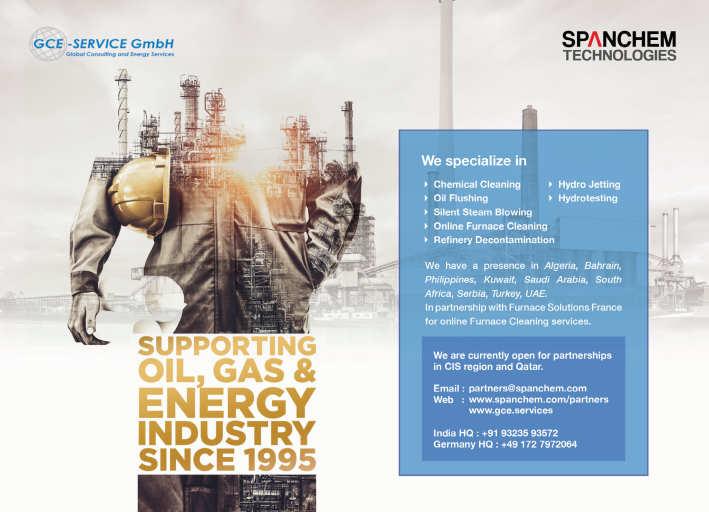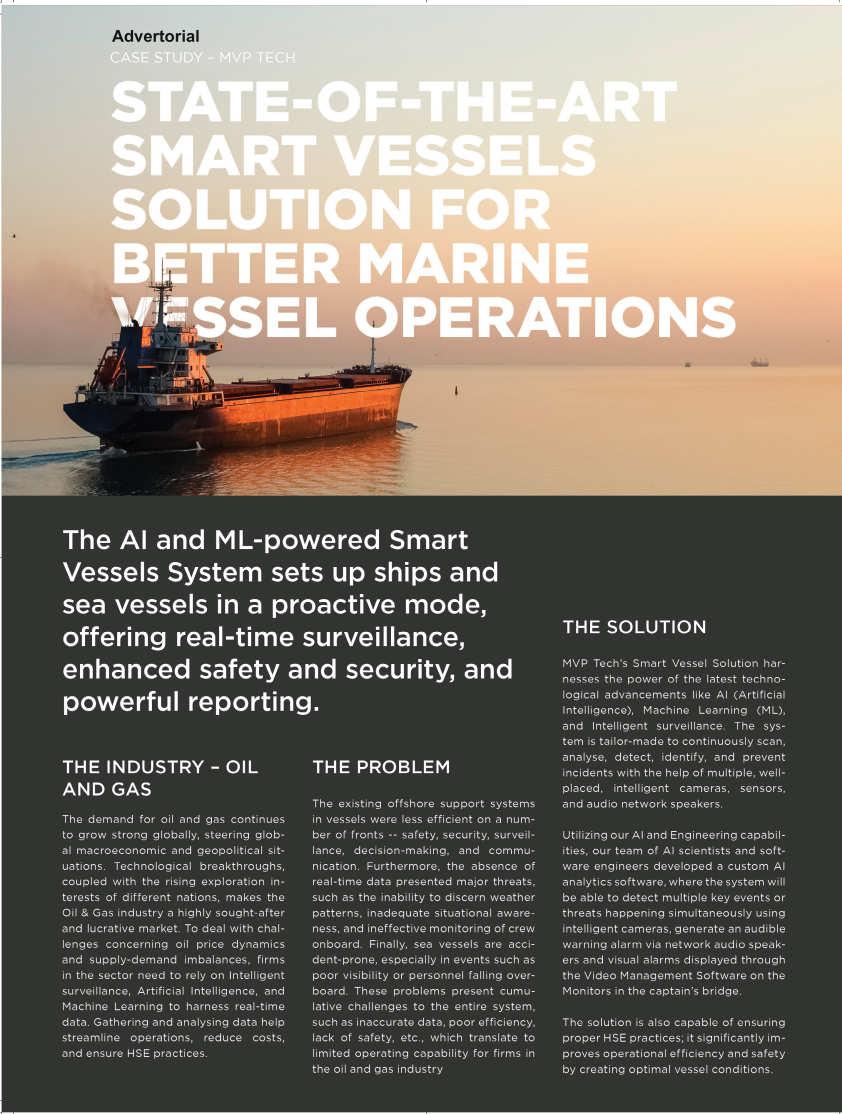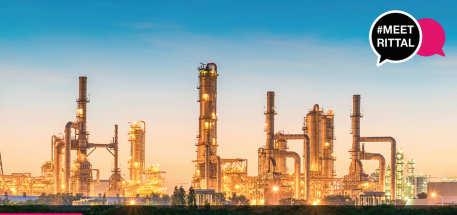
10 minute read
Improving the performance of wet gas flow meters
Dr Bruno Pinguet, Multiphase Domain senior advisor at TÜV SÜD National Engineering Laboratory, discusses why widely deployed wet-gas flow meters are delivering significant inaccuracies.

THE USE OF wet-gas flow meters (WGFM) is growing around the world, particularly in Asia Pacific and the Middle East, and can be classified into three main categories: • Single-phase – gives a continuous measurement of the gas flow rate only. • Two-phase – gives a continuous measurement of both the gas and the liquid flow rates. • Multiphase – continuously measures the gas and the liquid flow rate, as well as the water to liquid ratio (WLR).
Each of the above flow meter types can be selected based on an operator’s need, the stream conditions, and a cost/benefit analysis. However, offering continuous measurement of the liquid flow rate and WLR is becoming a mandatory requirement for most applications. This is because the condensate has a market value itself, which is usually three times higher than the crude. The detection of any water breakthrough is also of importance for effective reservoir management.
Venturi tubes are one of the most common types of flow measurement devices used worldwide for wet-gas conditions and form the main component in most commercial flow meters. Over the past 60 years, an extensive research effort has developed robust correlations to correct meter over-reading due to the unexpected (or not) presence of liquid in the gas phase; this led to the development of ISO 11583:2012. The uncertainty in the correction factor (C/Φ) quoted in ISO 11583:2012 is between ±2.5 % to ±3 %. However, this is not the overall gas mass flow rate uncertainty. The uncertainty in the fluids properties should be correctly accounted for to obtain the overall gas and liquid flow rate measurements. Under test laboratories conditions, with well characterised fluids, the overall gas mass flow rate uncertainty is of a similar value to the uncertainty in the correction factor, since the uncertainty contribution of the fluid properties is very low. However, the uncertainty contribution under field conditions could be substantially higher. This can critically affect allocation accuracy and lead to potential disputes between different production platforms or custody transfer applications.
Meter testing
A WGFM is often selected based on standard production conditions or at the early stages of the reservoir’s lifetime. Before it is deployed, a WGFM sometimes goes through a dynamic Factory Acceptance Test (FAT) at a test facility, using a flow loop. As it is essential to ensure that the WGFM undergoes proper evaluation, this should include a test matrix which can only be provided by a test facility that is independent of any meter manufacturer. This is the only method to properly characterise the flow meter performance against fully traceable and certified reference flow meters under controlled and stable conditions.
Subsequently, when a flow meter is installed in the field it is sometimes tuned or tested against a test separator. After commissioning, the reservoir engineer is left to update the necessary input parameters to the meter software correctly. These should include the fluids composition or the densities of the fluids. Other input parameters, depending on the technologies being used, should include the fluids’ conductivity and/or permittivity, as well as the fluids' gamma-ray absorption coefficients. During a flow loop test, such parameters can be measured accurately, but this is usually not achievable in the field.
Moreover, wet-gas flow meters that incorporate phase fraction devices may also need to be calibrated by filling the meter with only one liquid phase at a time. Again, this is possible during laboratory tests, but less so under field conditions. Neither is obtaining fluid density, viscosity and composition with low uncertainty a straightforward task for wetgas conditions in the field. While commercial solutions are available for sampling wet-gas flow rates, there is no single industry standard for wet-gas sampling methods and techniques. Consequently, fluid parameters with a high uncertainty, or which do not adequately represent real-world flowing fluids, may be used as the input for testing wet-gas flow meters.
It is therefore highly important to properly assess the sensitivity of the correlations or models employed to the fluid properties
measurement uncertainties. As such, uncertainties can be substantially propagated to the final flowrates output and should not be disregarded. The flow meter end-user should therefore quickly run a sensitivity analysis for the correlations, which are included in ISO/TR 11583 and ISO/TR 12748. It is vital not to use proprietary correlations or models as the operator may artificially insert a wrong value of a chosen parameter (e.g., liquid density, gas density etc.) in the meter software during a FAT test. However, no flow loop can address the specific needs of every end-user, and there is no facility in the field capable of achieving the level of uncertainty claimed by some wet-gas meter manufacturers.
Test separator limitations
If a wet-gas meter is tested or tuned against a test separator, then it is vital to ask how trustworthy the test separator is as a reference standard and how often such an exercise should be repeated?
A test separator needs to be appropriately sized, carefully maintained, and properly operated to deliver a field reference standard and accuracy. However, this is rarely achieved in the field. Also, the WGFM is often situated at a considerable distance from the test separator and will therefore experience different line conditions. As such, it is then necessary to properly account for any changes in the fluids due to pressure and temperature. In summary, there is no guarantee that a WGFM tested or tuned against a test separator is measuring the flow rates accurately or that it will measure the flow rates accurately under future field conditions.
Laboratory versus field
Correlations to correct the response of an orifice meter or a Venturi tube in wet-gas flows have been developed in the past and have been published in ISO/TR 11583 and ISO/TR 12748. This means that the correlations can be inspected and their sensitivity to the different input parameters easily assessed. The pressure loss ratio equations available in ISO/TR 11583 are another good step forward.
However, the risk with any empirical or semi-empirical correlations is when it is used outside the experimental conditions upon which it has been developed. Generally, the correlations employed in wet-gas flow meters are based upon tests carried out in a flow loop and it is impractical to bring the accuracy of a laboratory flow loop into the field. Likewise, it is impractical to bring every field condition into the flow loop. However, parameters such as liquid viscosity, surface tension and gas viscosity may be systematically changed in a flow loop to match the range encountered in the field. While this is an expensive exercise, it will offer a solid basis for the future development of wet-gas flow meters.
It is clear that the performance statement or verification of wet-gas flow meters should be based on proper development and the use of a test matrix, alongside the final use. Computational Fluid Dynamics (CFD) could also be used to establish performance beyond the capability of test facilities. Additionally, an analysis of the input parameters and the associated error propagation should be completed. Finally, the conversion of the flow rate and uncertainty from line conditions to standard conditions should be carried out through the propagation of error on the equations associated with the pressure-volume-temperature (PVT). This scientific method to address the entire performance of a flow meter (wet-gas or multiphase) is summarised by Figure 1. n



Mobile emissions treatment in line with Saudi and Middle East green initiatives
ENDEGS, THE MARKET leader in mobile combustion technology, has developed the world’s first fully equipped, autonomously operated, trailer-mounted vapour combustion unit (VCU) for hydrocarbons, with combustion power available in 5, 10 or 20 MW capacity.
The company’s vapour control technologies have been used over several years – mainly for tank and pipe degassing, VRU replacement and loading applications. Some of them have lasted up to three years, involving the degassing of hundreds of liquid gas tankers or sea vessels in the chemical, petrochemical and gas industries.
For more than 14 years, ENDEGS has been offering professional project management for mobile vapour treatment of all kinds of gases, gas compounds and vapours of explosion groups IIA, IIB and IIC, ensuring a combustion rate of almost 100% during maintenance, repair, decommissioning, TAR, and emergency operations.
“Whether complete service or individual modules for rent, we find a customised solution for every challenge, no matter how individual it is. That makes the difference,” says Kai Sievers, founder and CEO of ENDEGS GmbH.
Besides the oil and gas industry, ENDEGS also serves clients in other industries such as fertiliser, automotive and others, where the products and their challenges are different. For example, cryogenic products such as ammonia or substances such as butadiene tend to polymerise, and they need a special degassing procedure – of course without smoke or flame, and without polymerisation.
The ENDEGS own developed solution for mobile degassing can be used at any place, without the need of a crane. The solution is time and cost effective and can be placed close to the place of maintenance, which would release the vapours to the atmosphere. Furthermore, ENDEGS has developed working processes which are also patented to minimise the overall risk and increase the level of safety. The mobile combustion unit from ENDEGS is able to handle the vapours from a tank, vacuum truck and/or intermediate tanks all at once without any impact of noise, open flame or odour on the surrounding environment. In addition, ENDEGS’ highly skilled operator controls the process and ensures the safe operation for all workers involved. As well as safety, the protection of the environment and the reduction of the greenhouse gas footprint are top priorities.

Image credit: ENDEGS GmbH
ENDEGS has developed the world’s first fully equipped, autonomously operated, trailermounted VCU for hydrocarbons.
For further information contact ENDEGS ARABIA Ltd., 1st Industrial City, SA – 31441 Dammam – P.O. BOX 1997 + 966 569 999 008 or +31 6 1 9 87 63 22 Gertjan.pieterson@endegs.com; www.endegs.com
Discover solutions for your industry with Rittal
NEW TECHNOLOGIES AND trends are transforming the oil and gas industry. Digitalisation, individualisation, and climate protection are prime examples. Rittal, the leading global systems provider for enclosures, power distribution, climate control, IT infrastructure and software, addresses the resulting challenges faced. The company’s industry-specific know-how relating to the legal framework, regulations and industry standards gives it a better understanding of customer requirements.
“Rittal is ahead in recognising the evolving needs and trends of the industry,” said Xander Kruger, managing director, Rittal Middle East.

Rittal’s webcasts enabled oil and gas professionals to learn more about Rittal’s offerings.
Image credit: Rittal
The various partner levels serving the end customers are rapidly adapting to the latest technologies to provide an efficient and economical solution.
“Rittal – The System” benefits from a high level of flexibility and standardisation that helps the company provide made-to-measure industrial and IT solutions for customers, covering all industry sectors.

Explosion protection in the oil & gas industry Explosion protection markings and standards may seem complicated at first, but they can be easily decoded and used to protect people and assets
Image credit: Rittal
when running electrical and control equipment near explosive and flammable materials.
Rittal helps you understand the safety requirements and standards for explosion protection and translate that into easily deployed products to help safeguard your process environment.
A series of webcasts hosted by Rittal expert Nick Tamizifar, vertical market manager for Process Industries, was held in October 2021, enabling oil and gas industry professionals from around the world to learn more about the offerings from Rittal for the vertical market (oil and gas). The audience turnout and webcast series campaign was a huge success.









